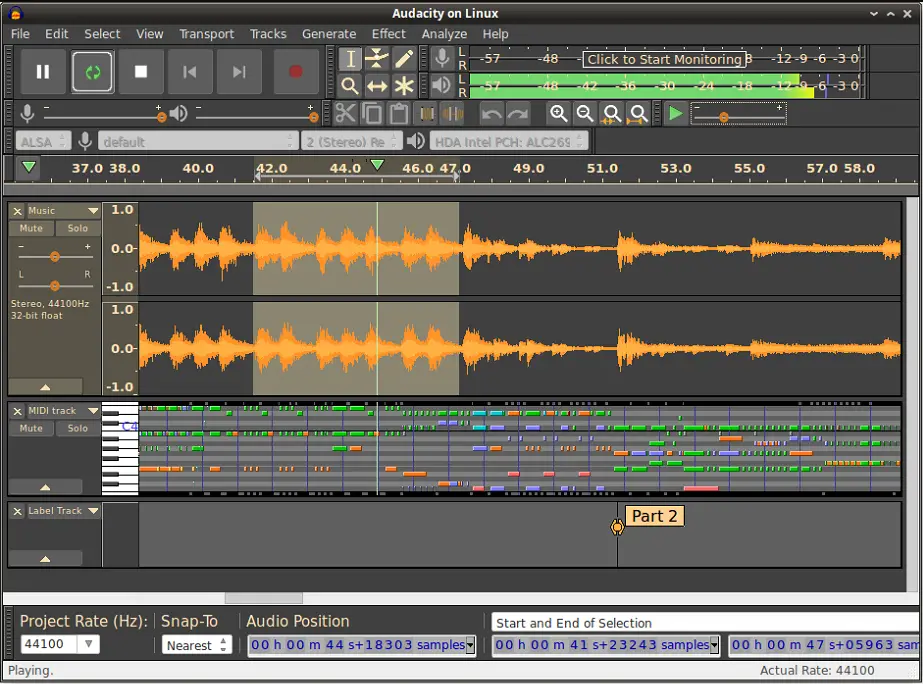
Timer Record and Sound Activated Recording features.Record computer playback on Windows Vista and later by choosing “Windows WASAPI” host in Device Toolbar then a “loopback” input.Record from microphone, line input, USB/Firewire devices and others.Clipping can be displayed in the waveform or in a label track.


Now point your mouse cursor on the top white square on the left side, and while your mouse finger is still down, drag the square downwards : To show you how this can change the volume of just one part of the audio click on the blue line close to where you first clicked : Now you can 'grab' the blue line at the point where these squares appear.

To do this click on the blue line, you will see small white squares appear where you clicked : You can now lower the volume on chosen sections of the track by changing the shape of this blue line. The thin blue line actually represents the volume of the track. This means the Envelope Tool is activated. You can see the blue line around the track in the above image. Before pressing the Envelope Tool a track looks like this : The second is that the tracks are surrounded by a blue line. When you click on it there are two parts of the Audacity interface that change, the first is that the Envelope Tool button looks like it has been pressed : The Envelope Tool has an icon in the Audacity Tool Bar, it looks like this :

So my Audacity initially looks like this : We will use two stereo music files to mix together using the Envleope Tool. You will first have to have Audacity open with more than one track. It allows you to alter the volume of the sounds in Audacity which is especially important when you are combining ('mixing') several tracks together. The envelope tool is probably the most important tool for Audacity users.


 0 kommentar(er)
0 kommentar(er)
